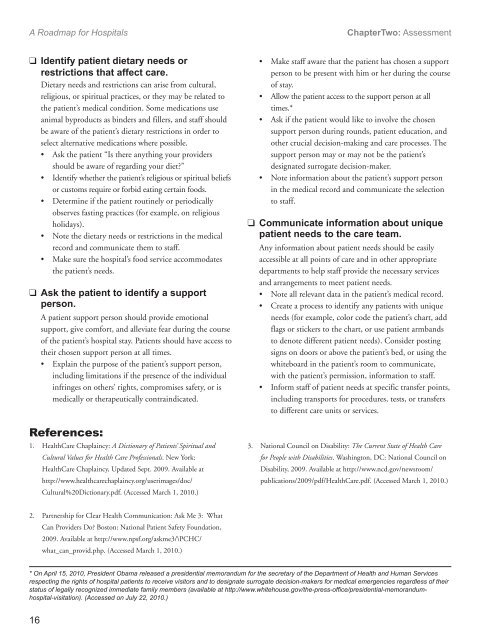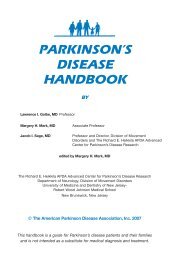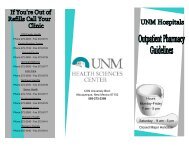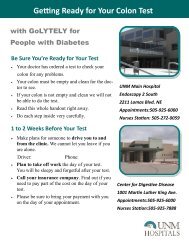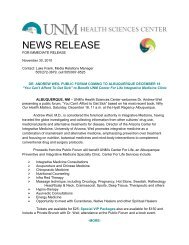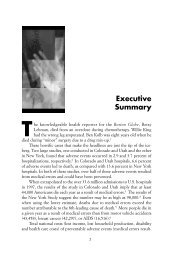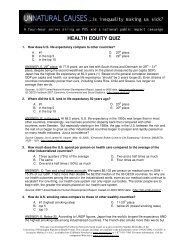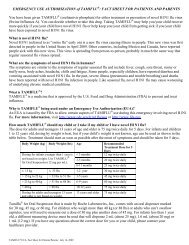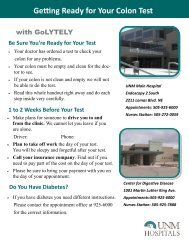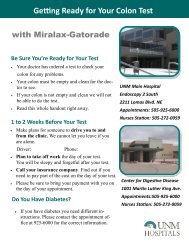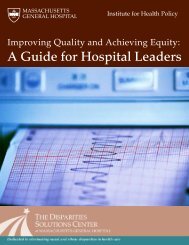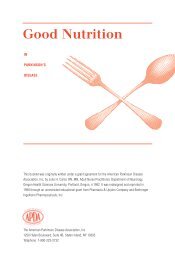Advanced Effective Communication, Cultural Competence, and ...
Advanced Effective Communication, Cultural Competence, and ...
Advanced Effective Communication, Cultural Competence, and ...
Create successful ePaper yourself
Turn your PDF publications into a flip-book with our unique Google optimized e-Paper software.
A Roadmap for Hospitals<br />
ChapterTwo: Assessment<br />
❑ Identify patient dietary needs or<br />
restrictions that affect care.<br />
Dietary needs <strong>and</strong> restrictions can arise from cultural,<br />
religious, or spiritual practices, or they may be related to<br />
the patient’s medical condition. Some medications use<br />
animal byproducts as binders <strong>and</strong> fillers, <strong>and</strong> staff should<br />
be aware of the patient’s dietary restrictions in order to<br />
select alternative medications where possible.<br />
• Ask the patient “Is there anything your providers<br />
should be aware of regarding your diet?”<br />
• Identify whether the patient’s religious or spiritual beliefs<br />
or customs require or forbid eating certain foods.<br />
• Determine if the patient routinely or periodically<br />
observes fasting practices (for example, on religious<br />
holidays).<br />
• Note the dietary needs or restrictions in the medical<br />
record <strong>and</strong> communicate them to staff.<br />
• Make sure the hospital’s food service accommodates<br />
the patient’s needs.<br />
❑ Ask the patient to identify a support<br />
person.<br />
A patient support person should provide emotional<br />
support, give comfort, <strong>and</strong> alleviate fear during the course<br />
of the patient’s hospital stay. Patients should have access to<br />
their chosen support person at all times.<br />
• Explain the purpose of the patient’s support person,<br />
including limitations if the presence of the individual<br />
infringes on others’ rights, compromises safety, or is<br />
medically or therapeutically contraindicated.<br />
References:<br />
1. HealthCare Chaplaincy: A Dictionary of Patients’ Spiritual <strong>and</strong><br />
<strong>Cultural</strong> Values for Health Care Professionals. New York:<br />
HealthCare Chaplaincy, Updated Sept. 2009. Available at<br />
http://www.healthcarechaplaincy.org/userimages/doc/<br />
<strong>Cultural</strong>%20Dictionary.pdf. (Accessed March 1, 2010.)<br />
• Make staff aware that the patient has chosen a support<br />
person to be present with him or her during the course<br />
of stay.<br />
• Allow the patient access to the support person at all<br />
times.*<br />
• Ask if the patient would like to involve the chosen<br />
support person during rounds, patient education, <strong>and</strong><br />
other crucial decision-making <strong>and</strong> care processes. The<br />
support person may or may not be the patient’s<br />
designated surrogate decision-maker.<br />
• Note information about the patient’s support person<br />
in the medical record <strong>and</strong> communicate the selection<br />
to staff.<br />
❑ Communicate information about unique<br />
patient needs to the care team.<br />
Any information about patient needs should be easily<br />
accessible at all points of care <strong>and</strong> in other appropriate<br />
departments to help staff provide the necessary services<br />
<strong>and</strong> arrangements to meet patient needs.<br />
• Note all relevant data in the patient’s medical record.<br />
• Create a process to identify any patients with unique<br />
needs (for example, color code the patient’s chart, add<br />
flags or stickers to the chart, or use patient armb<strong>and</strong>s<br />
to denote different patient needs). Consider posting<br />
signs on doors or above the patient’s bed, or using the<br />
whiteboard in the patient’s room to communicate,<br />
with the patient’s permission, information to staff.<br />
• Inform staff of patient needs at specific transfer points,<br />
including transports for procedures, tests, or transfers<br />
to different care units or services.<br />
3. National Council on Disability: The Current State of Health Care<br />
for People with Disabilities. Washington, DC: National Council on<br />
Disability, 2009. Available at http://www.ncd.gov/newsroom/<br />
publications/2009/pdf/HealthCare.pdf. (Accessed March 1, 2010.)<br />
2. Partnership for Clear Health <strong>Communication</strong>: Ask Me 3: What<br />
Can Providers Do? Boston: National Patient Safety Foundation,<br />
2009. Available at http://www.npsf.org/askme3/\PCHC/<br />
what_can_provid.php. (Accessed March 1, 2010.)<br />
* On April 15, 2010, President Obama released a presidential memor<strong>and</strong>um for the secretary of the Department of Health <strong>and</strong> Human Services<br />
respecting the rights of hospital patients to receive visitors <strong>and</strong> to designate surrogate decision-makers for medical emergencies regardless of their<br />
status of legally recognized immediate family members (available at http://www.whitehouse.gov/the-press-office/presidential-memor<strong>and</strong>umhospital-visitation).<br />
(Accessed on July 22, 2010.)<br />
16


